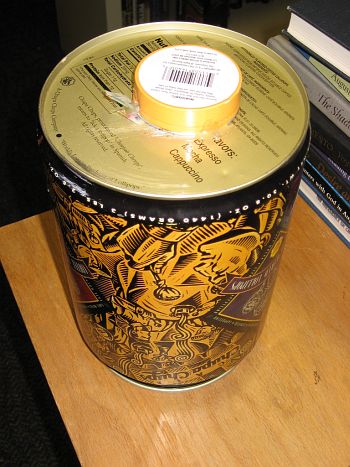
I built Charles Wenzel's simple ion chamber. It creates an electric field inside the can via a battery. A wire in the center of the can, isolated from the can, is connected to a transistor pair called a Darlington, essentially a pair of amplifiers. When ionizing radiation creates an ion in the can, the electric field drives the ion towards either the can or the wire, depending on the charge of the ion. This creates a very small current which barely turns on the darlington to allow the voltmeter to measure a small change in voltage.
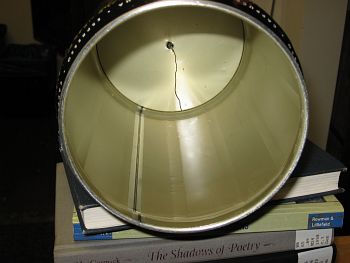
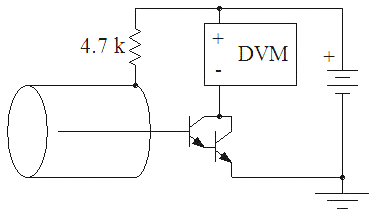
I could easily up the voltage on the chamber by snapping in more 9V batteries.
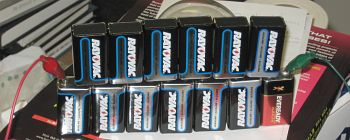
You can also light things up nicely: I had 122V DC at my disposal, although I wouldn't recommend running it for very long. Based on a rough calculation, the 40W lamp would run for an hour on this battery set, but the batteries aren't meant to source this much current (about 1/3 Amp).
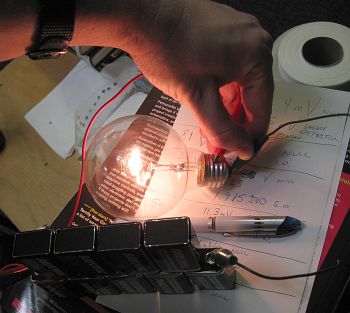
I had an easy way of changing the chamber voltage, 9 volts at a time, so I measured the quiescent voltage and the voltage with a smoke detector alpha particle source in the chamber. I sealed the chamber by placing it on a sheet of aluminum foil.
| Voltage | Null voltage | alpha source |
| 36V | 4.8mV | 9.1mV |
| 45V | 7.1mV | 14.9mV |
| 54V | 11.3mV | 20.6mV |
| 63V | 23.4mV | 41.5mV |
| 72V | 1230mV | 1915mV |
| 81V | 12000mV | 12000mV |
Dear Blogger, why do you mess my table so?
1 comment:
With regards to the input voltage/output voltage measurement table, I was wondering where the chamber was on the scale of ion chamber/proportional chamber/geiger-mueller counter.
Post a Comment